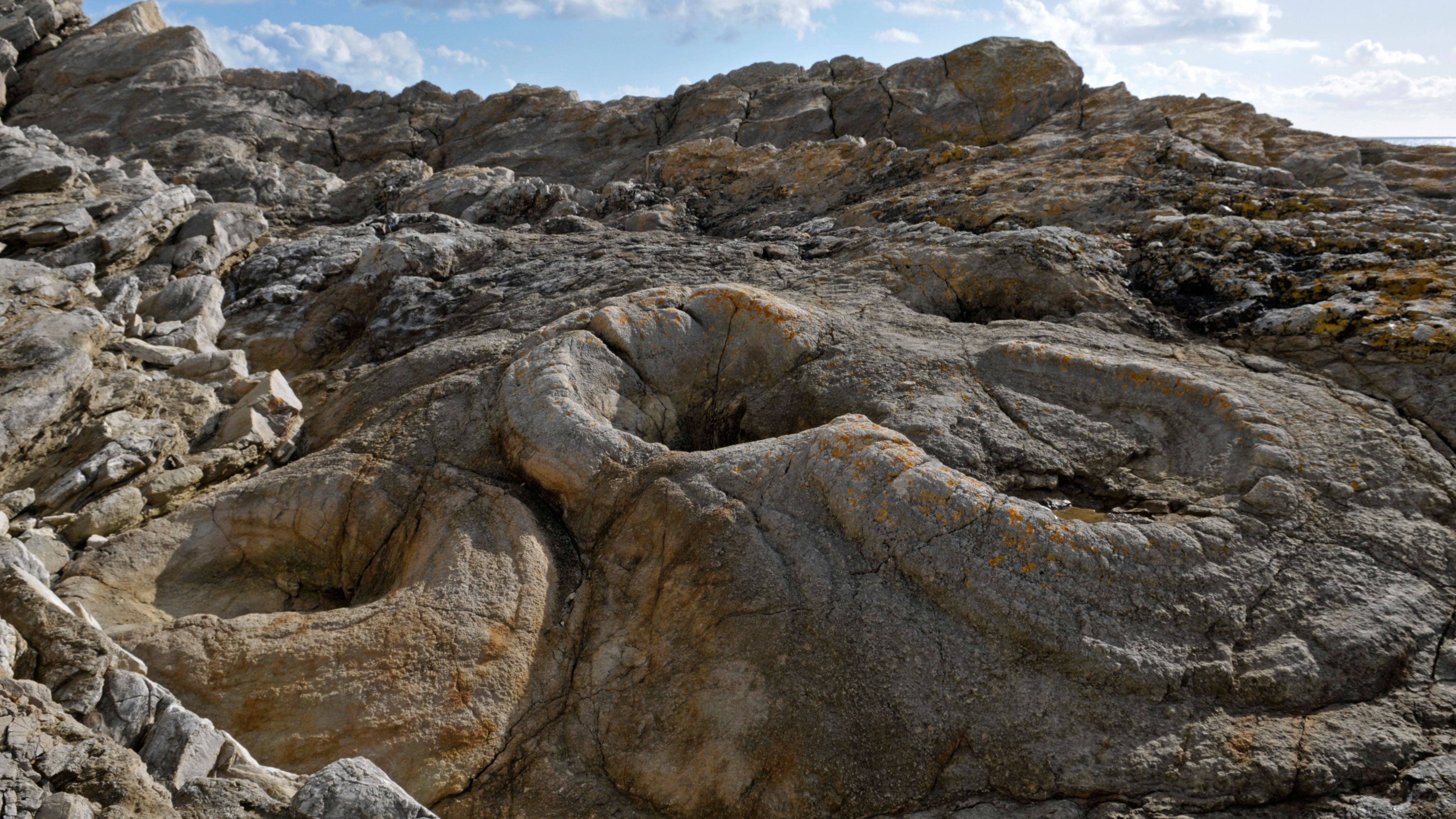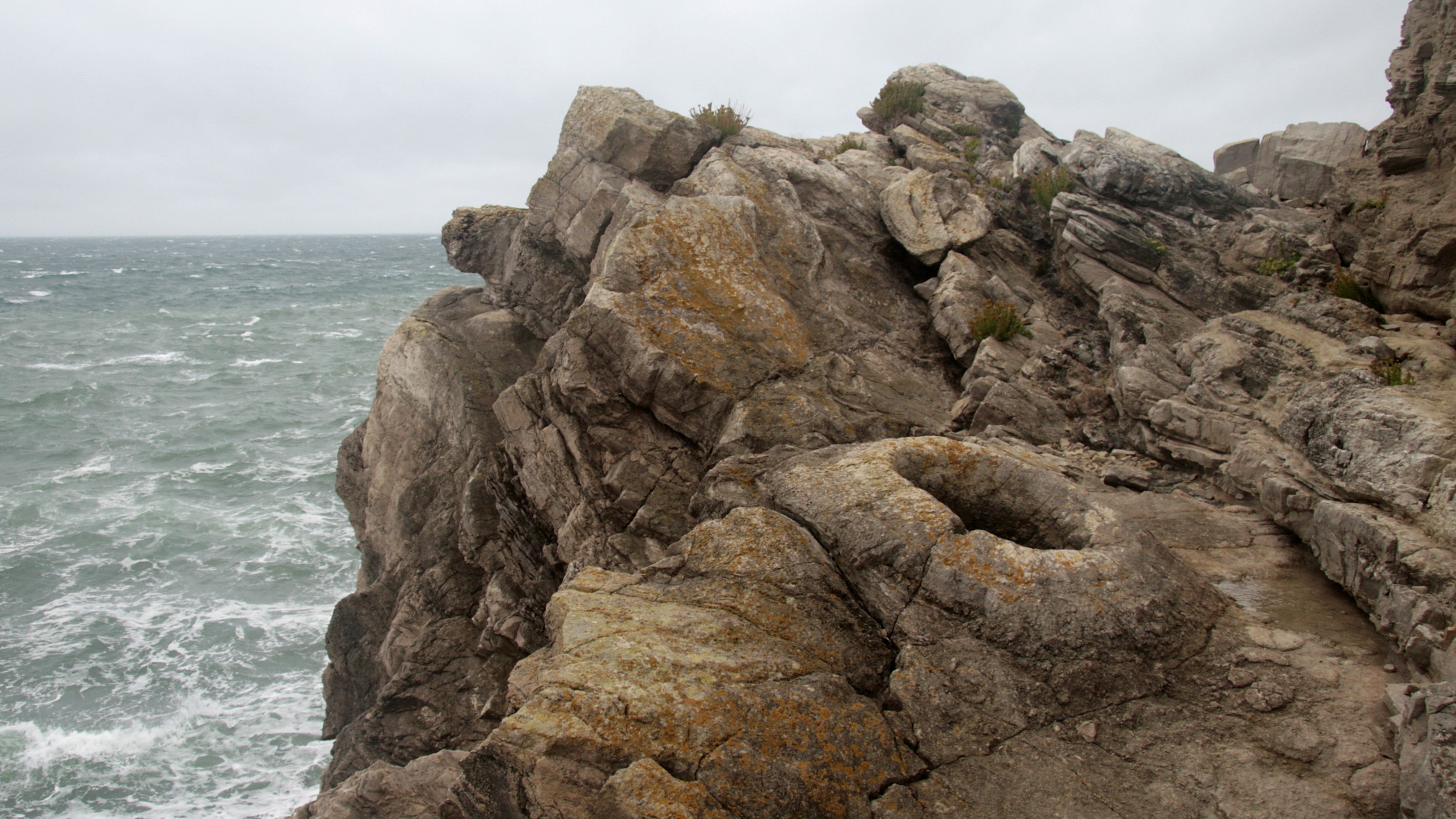Fossil Forest, Dorset: England's 145 million-year-old tree stump fossils preserved by ancient microbes
The Fossil Forest in Dorset is a stretch of southern English coastline peppered with living mounds of limestone that hide the remains of cypress trees from the late Jurassic period.

Name: Fossil Forest, Dorset
Location: West Lulworth, Dorset, England
Coordinates: 50.61646643547441, -2.241820971854925
Why it's incredible: The forest dates back to the late Jurassic, when dinosaurs still roamed Earth.
The Fossil Forest in Dorset is a 145 million-year-old clump of dead trees on the Jurassic Coast — a 95-mile-long (153 kilometers) stretch of coastline in southern England littered with fossils dating to the Jurassic period (201 million to 145 million years ago).
The Fossil Forest holds some of the strangest fossils on the Jurassic Coast thanks to throngs of tiny, algae-like microbes that colonized the trees shortly after they died. Over the eons, these colonies trapped and encrusted particles of calcium carbonate onto the trees, building living mats of limestone called thrombolites that are still visible today.
The now-fossilized forest grew during the end of the Jurassic period, at a time known as the Jurassic-Cretaceous boundary. During this boundary, temperatures dropped and sea levels fell, exposing fresh land and forming coastal plains on which new life, including trees, could thrive.
Ancient species of conifers, tree-ferns and cycads sprouted on what is now the southern coast of England as the ocean retreated.
Related: 390 million-year-old fossilized forest is the oldest ever discovered
Flowering plants had not yet evolved at this point in Earth's history, but dinosaurs may well have roamed the forest, according to the website Geology of the Wessex Coast, which is run by Ian West, a geologist and visiting scientist at the University of Southampton in the U.K.

The forest was short-lived because sea levels soon rose again, drowning the trees in salty water. But rather than rot away, the roots and trunks were preserved by microbes. Eventually, the trees' trunks broke off, leaving behind rounded mounds known as "algal burrs" that still sit on the coastline and form the Fossil Forest.
Sign up for the Live Science daily newsletter now
Get the world’s most fascinating discoveries delivered straight to your inbox.
A few tree trunks have been found preserved along the Jurassic Coast, but none remain at the Fossil Forest site. This is likely because visitors in Victorian times plundered them, according to the Jurassic Coast Trust.
The Fossil Forest's algal burrs are located halfway up a cliff facing the English Channel. Most of the woody remains inside the burrs belong to an ancient type of cypress called Protocupressinoxylon, and these remains are still rooted in prehistoric soil, West wrote on Geology of the Wessex Coast.
As such, the Fossil Forest "provides information on an ancient environment in which late Jurassic dinosaurs lived," West wrote.

Sascha is a U.K.-based staff writer at Live Science. She holds a bachelor’s degree in biology from the University of Southampton in England and a master’s degree in science communication from Imperial College London. Her work has appeared in The Guardian and the health website Zoe. Besides writing, she enjoys playing tennis, bread-making and browsing second-hand shops for hidden gems.









